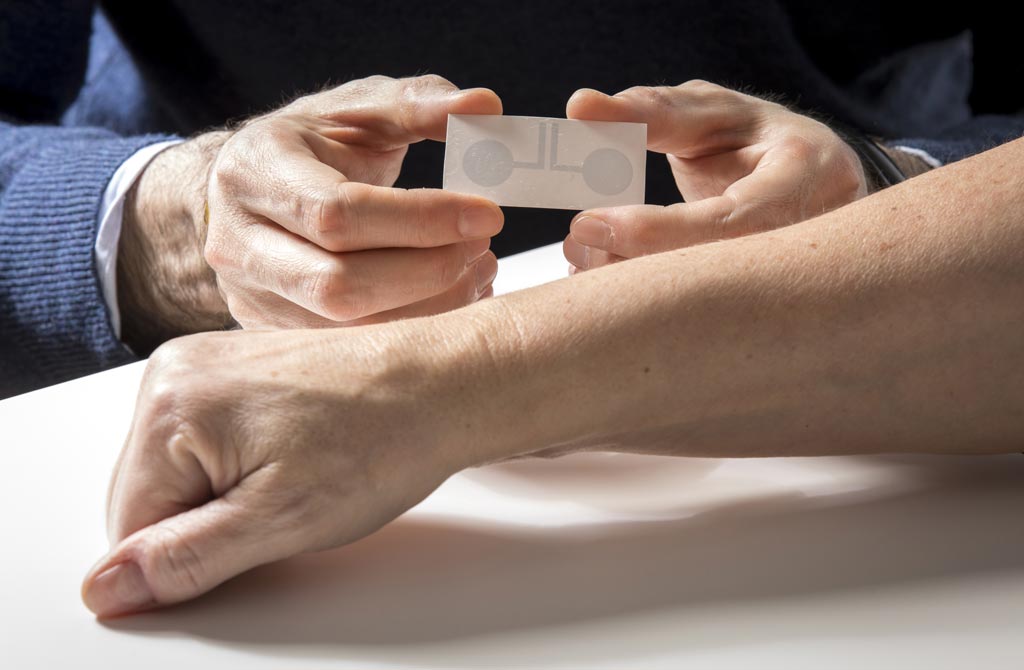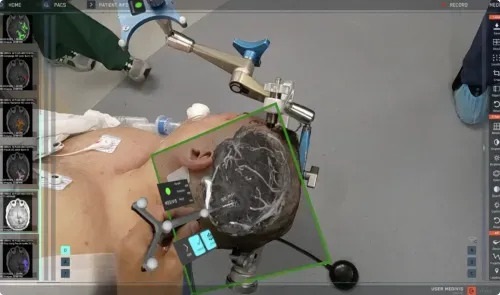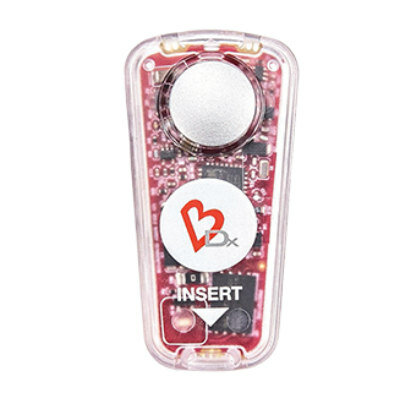Inkjet-Printed Tattoos Support Medical Diagnostics
|
By HospiMedica International staff writers Posted on 12 Apr 2018 |

Image: Novel tattoo electrodes can be applied to the skin like temporary transfer pictures (Photo courtesy of Lunghammer / TUGraz).
A new study shows how electrodes for long-term monitoring of electrical impulses can be produced using an ink-jet printer.
Developed by researchers at Graz University of Technology (TUGraz; Austria), the BioRobotics Institute (Pontedera, Italy), and other institutions, the dry, unperceivable temporary tattoo electrodes can be fabricated by inkjet printing of a conducting polymer onto commercial decal transfer paper, which allows for easy transfer on the user's skin. The printer can produce single or multiple electrode arrangements, with all of the external connections necessary for transmitting the signals integrated directly in the tattoo.
The electrodes are then applied to the skin as a temporary tattoo, with adhesion maintained by their ultralow thickness--under one micrometer--allowing them to adapt perfectly to uneven human skin, and even be applied to parts of the body where traditional electrodes are not suitable, such as the face. Another feature is that even a perforation of the tattoo, for instance through the growth of a hair, does not impair conductivity or signal transmission, which is particularly relevant in the case of long-term applications, as hair growth leads to inaccuracies in the results of traditional measuring methods.
The researchers validated electrophysiological viability of the tattoo by surface electromyography (EMG) and electrocardiography (ECG) recordings on various limbs and the face, with the tattoos providing flawless data transmission for up to three days. According to the researchers, electrodes of different sizes and arrangements could be produced using the printer, which can be individually adapted to the respective body part on which the measurement is to be carried out, without restricting or influencing normal activities. The study was published in the March 2018 issue of Advanced Science.
“We are working on the development of wireless tattoo electrodes with integrated transistor, which would make it possible to both send and receive signals. Not only could we measure impulses using this method, but we could also stimulate body regions in a targeted way,” said senior author Francesco Greco, PhD, of TUGraz. “We are on a direct road to making an extremely economical and simple as well as versatile applicable system which has enormous market potential.”
Related Links:
Graz University of Technology
BioRobotics Institute
Developed by researchers at Graz University of Technology (TUGraz; Austria), the BioRobotics Institute (Pontedera, Italy), and other institutions, the dry, unperceivable temporary tattoo electrodes can be fabricated by inkjet printing of a conducting polymer onto commercial decal transfer paper, which allows for easy transfer on the user's skin. The printer can produce single or multiple electrode arrangements, with all of the external connections necessary for transmitting the signals integrated directly in the tattoo.
The electrodes are then applied to the skin as a temporary tattoo, with adhesion maintained by their ultralow thickness--under one micrometer--allowing them to adapt perfectly to uneven human skin, and even be applied to parts of the body where traditional electrodes are not suitable, such as the face. Another feature is that even a perforation of the tattoo, for instance through the growth of a hair, does not impair conductivity or signal transmission, which is particularly relevant in the case of long-term applications, as hair growth leads to inaccuracies in the results of traditional measuring methods.
The researchers validated electrophysiological viability of the tattoo by surface electromyography (EMG) and electrocardiography (ECG) recordings on various limbs and the face, with the tattoos providing flawless data transmission for up to three days. According to the researchers, electrodes of different sizes and arrangements could be produced using the printer, which can be individually adapted to the respective body part on which the measurement is to be carried out, without restricting or influencing normal activities. The study was published in the March 2018 issue of Advanced Science.
“We are working on the development of wireless tattoo electrodes with integrated transistor, which would make it possible to both send and receive signals. Not only could we measure impulses using this method, but we could also stimulate body regions in a targeted way,” said senior author Francesco Greco, PhD, of TUGraz. “We are on a direct road to making an extremely economical and simple as well as versatile applicable system which has enormous market potential.”
Related Links:
Graz University of Technology
BioRobotics Institute
Latest Health IT News
- Machine Learning Model Improves Mortality Risk Prediction for Cardiac Surgery Patients
- Strategic Collaboration to Develop and Integrate Generative AI into Healthcare
- AI-Enabled Operating Rooms Solution Helps Hospitals Maximize Utilization and Unlock Capacity
- AI Predicts Pancreatic Cancer Three Years before Diagnosis from Patients’ Medical Records
- First Fully Autonomous Generative AI Personalized Medical Authorizations System Reduces Care Delay
- Electronic Health Records May Be Key to Improving Patient Care, Study Finds
- AI Trained for Specific Vocal Biomarkers Could Accurately Predict Coronary Artery Disease
- First-Ever AI Test for Early Diagnosis of Alzheimer’s to Be Expanded to Diagnosis of Parkinson’s Disease
- New Self-Learning AI-Based Algorithm Reads Electrocardiograms to Spot Unseen Signs of Heart Failure
- Autonomous Robot Performs COVID-19 Nasal Swab Tests

- Statistical Tool Predicts COVID-19 Peaks Worldwide
- Wireless-Controlled Soft Neural Implant Stimulates Brain Cells
- Tiny Polymer Stent Could Treat Pediatric Urethral Strictures
- Human Torso Simulator Helps Design Brace Innovations
- 3D Bioprinting Rebuilds the Human Heart
Channels
Artificial Intelligence
view channel
AI-Powered Algorithm to Revolutionize Detection of Atrial Fibrillation
Atrial fibrillation (AFib), a condition characterized by an irregular and often rapid heart rate, is linked to increased risks of stroke and heart failure. This is because the irregular heartbeat in AFib... Read more
AI Diagnostic Tool Accurately Detects Valvular Disorders Often Missed by Doctors
Doctors generally use stethoscopes to listen for the characteristic lub-dub sounds made by heart valves opening and closing. They also listen for less prominent sounds that indicate problems with these valves.... Read moreCritical Care
view channel.jpeg)
Transcatheter Valve Replacement Outcomes Similar To Surgery, Finds Study
A new study has shown that a minimally invasive procedure for replacing the aortic valve in the heart—known as transcatheter aortic valve replacement (TAVR)—is on par with the more traditional surgical... Read more
Revascularization Improves Life Quality in Chronic Limb-Threatening Ischemia, Finds Study
Researchers have undertaken a detailed study to evaluate the effects of revascularization strategies on the health-related quality of life (HRQoL) of patients with chronic limb-threatening ischemia.... Read moreSurgical Techniques
view channel
AR Surgical Technology Translates Complex 2D Medical Imaging to Enhance Accuracy
Surgeons often have to switch their focus between a patient’s data displayed on a screen or clipboard and the patient themselves during procedures. But that is about to change. Surgeons can now utilize... Read more
Miniaturized Snake-Like Probe Images Cerebral Arteries From Within
Endovascular interventions are being increasingly favored for treating strokes and cerebral artery diseases, but rely heavily on angiographical imaging that often struggles with limited contrast and spatial... Read morePatient Care
view channelFirst-Of-Its-Kind Portable Germicidal Light Technology Disinfects High-Touch Clinical Surfaces in Seconds
Reducing healthcare-acquired infections (HAIs) remains a pressing issue within global healthcare systems. In the United States alone, 1.7 million patients contract HAIs annually, leading to approximately... Read more
Surgical Capacity Optimization Solution Helps Hospitals Boost OR Utilization
An innovative solution has the capability to transform surgical capacity utilization by targeting the root cause of surgical block time inefficiencies. Fujitsu Limited’s (Tokyo, Japan) Surgical Capacity... Read more
Game-Changing Innovation in Surgical Instrument Sterilization Significantly Improves OR Throughput
A groundbreaking innovation enables hospitals to significantly improve instrument processing time and throughput in operating rooms (ORs) and sterile processing departments. Turbett Surgical, Inc.... Read morePoint of Care
view channel
Critical Bleeding Management System to Help Hospitals Further Standardize Viscoelastic Testing
Surgical procedures are often accompanied by significant blood loss and the subsequent high likelihood of the need for allogeneic blood transfusions. These transfusions, while critical, are linked to various... Read more
Point of Care HIV Test Enables Early Infection Diagnosis for Infants
Early diagnosis and initiation of treatment are crucial for the survival of infants infected with HIV (human immunodeficiency virus). Without treatment, approximately 50% of infants who acquire HIV during... Read more
Whole Blood Rapid Test Aids Assessment of Concussion at Patient's Bedside
In the United States annually, approximately five million individuals seek emergency department care for traumatic brain injuries (TBIs), yet over half of those suspecting a concussion may never get it checked.... Read more
New Generation Glucose Hospital Meter System Ensures Accurate, Interference-Free and Safe Use
A new generation glucose hospital meter system now comes with several features that make hospital glucose testing easier and more secure while continuing to offer accuracy, freedom from interference, and... Read moreBusiness
view channel
Johnson & Johnson Acquires Cardiovascular Medical Device Company Shockwave Medical
Johnson & Johnson (New Brunswick, N.J., USA) and Shockwave Medical (Santa Clara, CA, USA) have entered into a definitive agreement under which Johnson & Johnson will acquire all of Shockwave’s... Read more


















